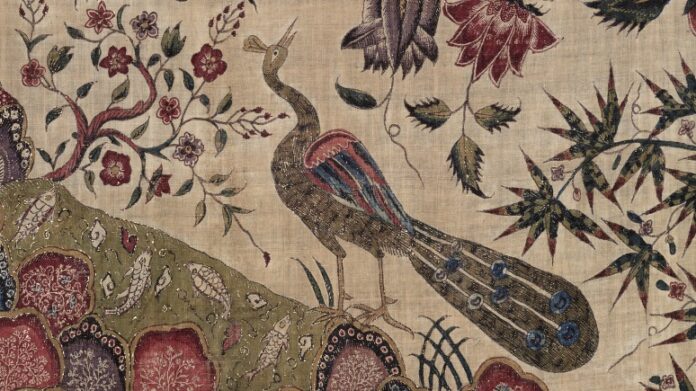TORONTO: For the first time in 50 years, the Royal Ontario Museum’s world-renowned collection of Indian chintz will be presented to the public in a new original exhibition opening September 12. The Cloth that Changed the World: India’s Painted and Printed Cottons celebrates the technical mastery, creativity, and far-reaching influence of India’s vividly painted and printed textiles, from the origins of dyeing and weaving millennia ago, to the artisans working today. On display through to Fall 2021, this extraordinary exhibition presents 20 recognized masterworks alongside 10 new acquisitions and rare loans from prestigious international collections.
“The world would be a drab place without India,” says Dr. Sarah Fee, the exhibition’s lead curator and the ROM’s Senior Curator, Global Fashion and Textiles. “Our blue jeans and printed T-shirts trace much of their lineage back to the ingenuity of India’s cotton printers and dyers. This exhibition celebrates how India ‘clothed the world’ in exuberantly coloured cottons for thousands of years.”
On view in the Patricia Harris Gallery of Textiles and Costume, The Cloth that Changed the World: India’s Painted and Printed Cottons presents the splendour of Indian chintz from the 13th century to today. It also explores the consequences of global consumer desire for the textile, from its role in intensifying Europe’s Industrial Revolution and the trans-Atlantic slave trade that accompanied it, to present-day environmental concerns.

Woman’s jacket. Made in coastal southeast India for the Dutch market; used in Hindeloopen, Friesland. Mordant-dyed and resist-dyed cotton, 18th century.
Originally set to open in April 2020, The Cloth that Changed the World was put on hold in response to COVID-19. It is supported by Exhibition Patron ROM Friends of Textiles and Costume and Burnham Brett Endowment Fund.
Visitors can get a taste of the exhibition to come in Florals: Desire and Design. This companion installation, open now in the European Special Exhibitions Gallery located in the third floor Samuel European Galleries, examines the connection between Europe’s decorative arts and new scientific study of plants in the 18th century. Both are included with Museum admission. The exhibition companion book Cloth that Changed the World: The Art and Fashion of Indian Chintz further delves into the fascinating tales behind this influential textile. This collection of essays by world-renowned experts isedited by Dr. Fee and published by ROM and Yale University Press, with the support of the Louise Hawley Stone Charitable Trust.
Visitors can explore the ROM’s spacious galleries and permanent collections in a welcoming and safe environment, with new health and safety measures in place. To help ensure physical distancing and a comfortable Museum experience, the ROM is limiting the number of admissions to the Museum per day, and visitors are asked to pre-book timed-entry tickets online.













